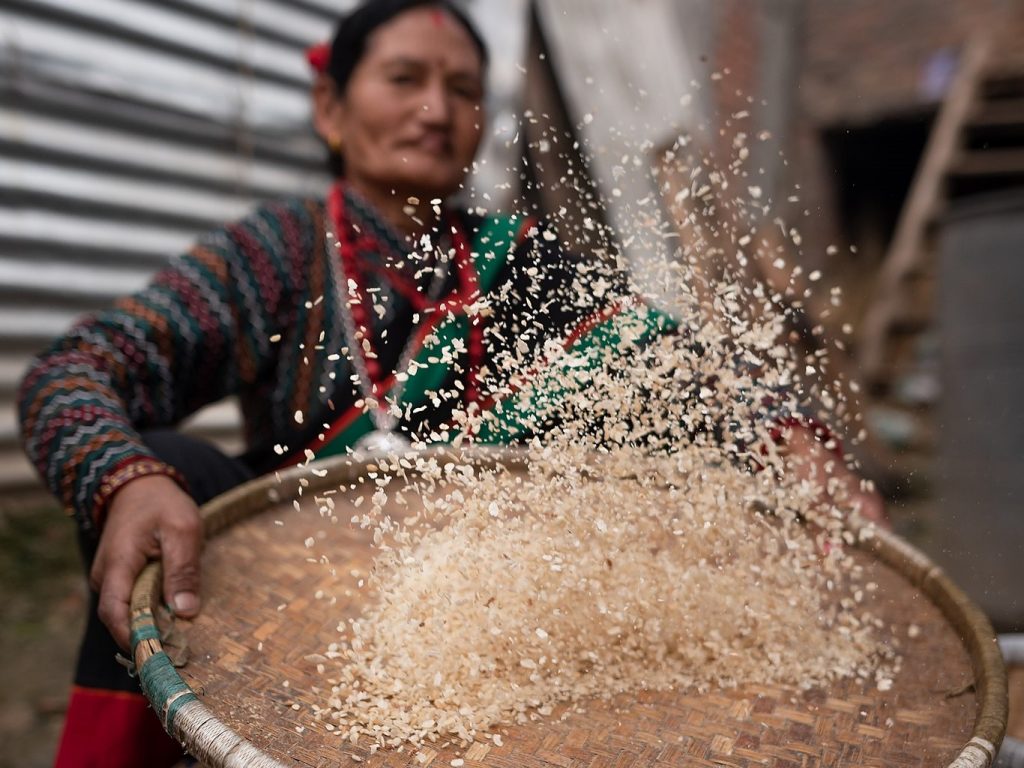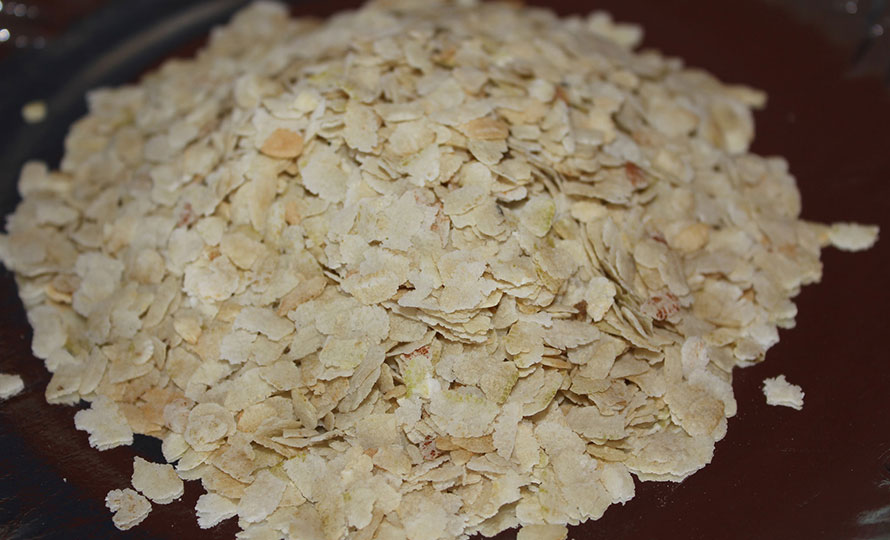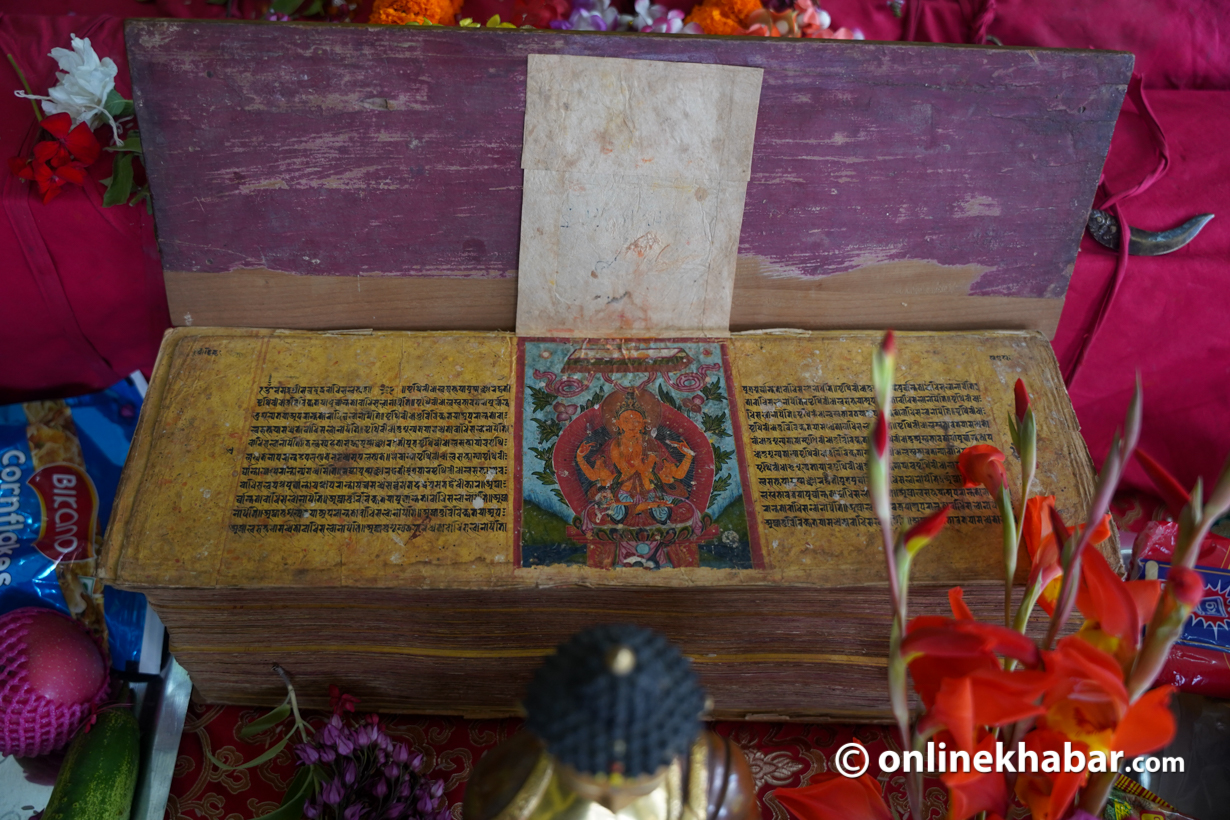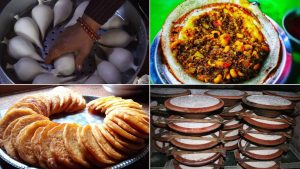“Baji nye dhuna laa?” literally means ‘have you had chiura (beaten rice)?’, but culturally, this is a common question that means a person is asking another if they had snacks or an afternoon meal. Members of the Newa community still casually use this phrase, but it implies how integral baji/chiura (beaten rice that most Nepalis refer to as chiura) has been to them. Yet when and how it became that integral is still open to debate.
Many who have tried to answer have concluded that baji, a staple food, must have come into existence as an agricultural byproduct. Similar references to the food, though irregular, has also been made in other countries including India, Bangladesh, Thailand and Indonesia.
Cultural expert Om Dhaubhadel says the same about the use of chiura in Nepal also. “As rice has been always been a major agricultural product for the Kathmandu valley, the leftover grains were then converted into chiura using an okhal (mortar and pestle) or dhiki (traditional rice beater).”
While he is still searching for the answer to who made it first where and when, there is another more intriguing question about how this “byproduct” developed into a staple food in the valley.
More variants than you think
When it comes to baji, there are surprisingly more than just one variant. The basic is the same: all kinds of baji come from rice or paddy. But, the different quality/grade of grains and the ways of preparing give different outputs. The more popular type of bajis are taichin baji that is sleeker in appearance, pyaa baji that is stacked/bundled, lhuya baji that is thicker, siya baji that is roasted (also slightly red in colour), and sya baji that is soaked and fried.
“Baji has its existence in many countries, but the baji in Nepal is particularly popular to eat because of the weather and climate,” Dhaubhadel says, “And also, our way of making it stands out. Elsewhere, they are too thick, too thin, too strong in flavour, sugar level and so on, but in Nepal, they are just right to eat.”
“But baji from Tigani, Madhyapur Thimi, is the best to eat and to be paired Juju dhau of Bhaktapur,” he says.

Unknown origins
Baji or chiura has been a staple food for many communities, including the Newa community, the traditional inhabitants of the Kathmandu valley. It is not just in a bhoj (feast) that one sees it, but households commonly use it as an alternative for rice, in everyday meals.
It is fast, easy and healthy local produce. “It has got no side effects [unlike commercial fast foods] and is easy for farmers to eat while they are working in the field.”
Though one cannot trace its origin, Dhaubhadel says the earliest written reference can be seen in manuscripts from the Lichhavi era. “Many of our cultures and their historical references can be either found in the Malla or Lichhavi eras because they started documenting their achievements and with that, many of our cultures also made their presence. There are references regarding how important baji had become a largely produced food in manuscripts from both eras.”
“There is a reference from the Lichhavi period that whenever kings used to organise feasts, they would ask the locals to bring locally famous baji to the royal court. This implies the quality and the popularity of baji had been established for long.”
Also, he says, “When Jayasthi Malla established rajkulo [royal canal], he organised a feast, where he asked for the locally produced baji which was in ample existence. We can find this reference in Gopal Raj Vamshavali, a 14th-century manuscript.”
Cultural importance

The biggest use of baji is definitely in the feasts of any scale and is also famously paired with dhau or dahi (curd) for Asar 15. It is also an essential part of any puja or holy offering in the Newa community.
But, apart from these, baji is used in several cultural and social events as well.
During Dashain, arguably the biggest festival of Nepal, two vessels, one with rice and another with chiura/baji, are kept as an offering. On the tenth day, the eldest female member of the family gives the two vessels to younger female members of the family, chronologically. The elders here hand over the responsibility and give blessings to the younger so that they learn to measure the two.
The use of baji is also common in coming-of-age ceremonies of the Newa community, like ih (bel bihah) and bara (gupha). In the ih ceremony, the girls are given a vessel (pathi) full of baji while in the bara ceremony, they give two palms full of bajji (pasa baji) to the elders. Both are taken as signs of the girls being responsible.
It has been known to be used as a gift that the bride’s family used to give the groom, most likely equal to the bride’s weight. When the newlyweds are welcomed into the groom’s house, they perform a ceremony where the groom asks the bride to give him baji.

























